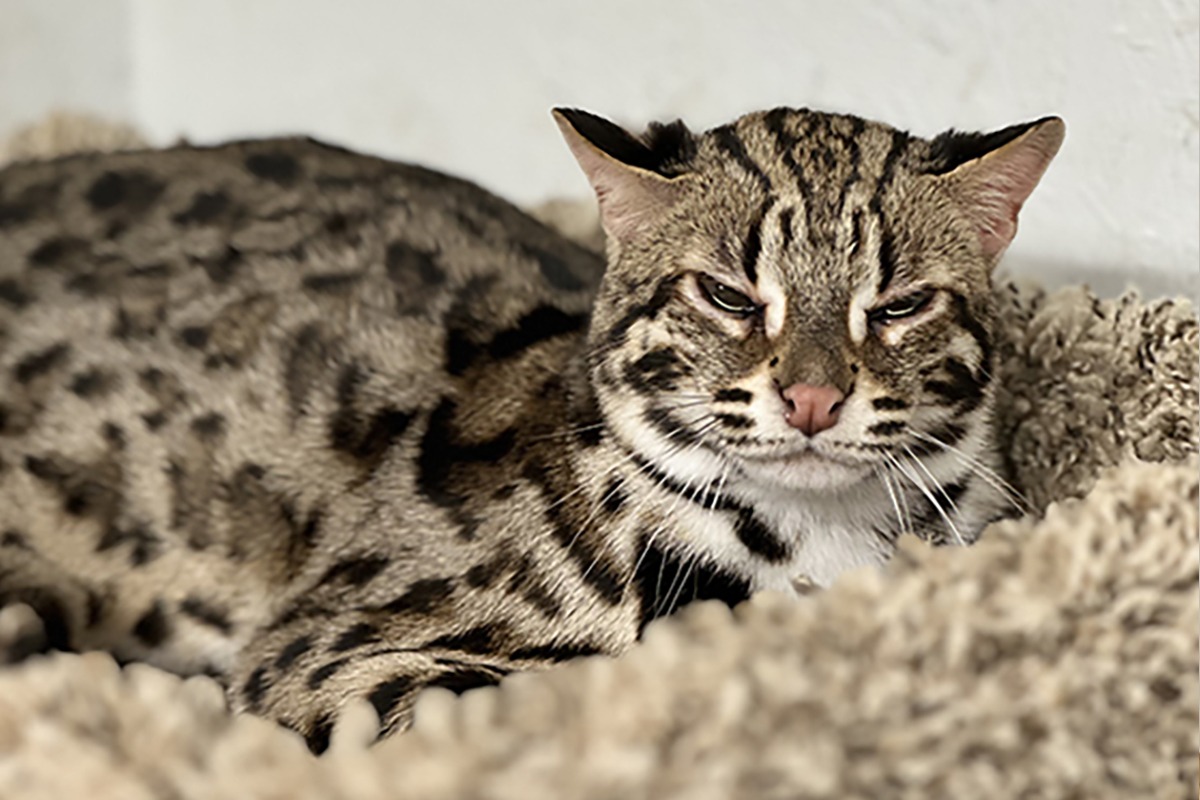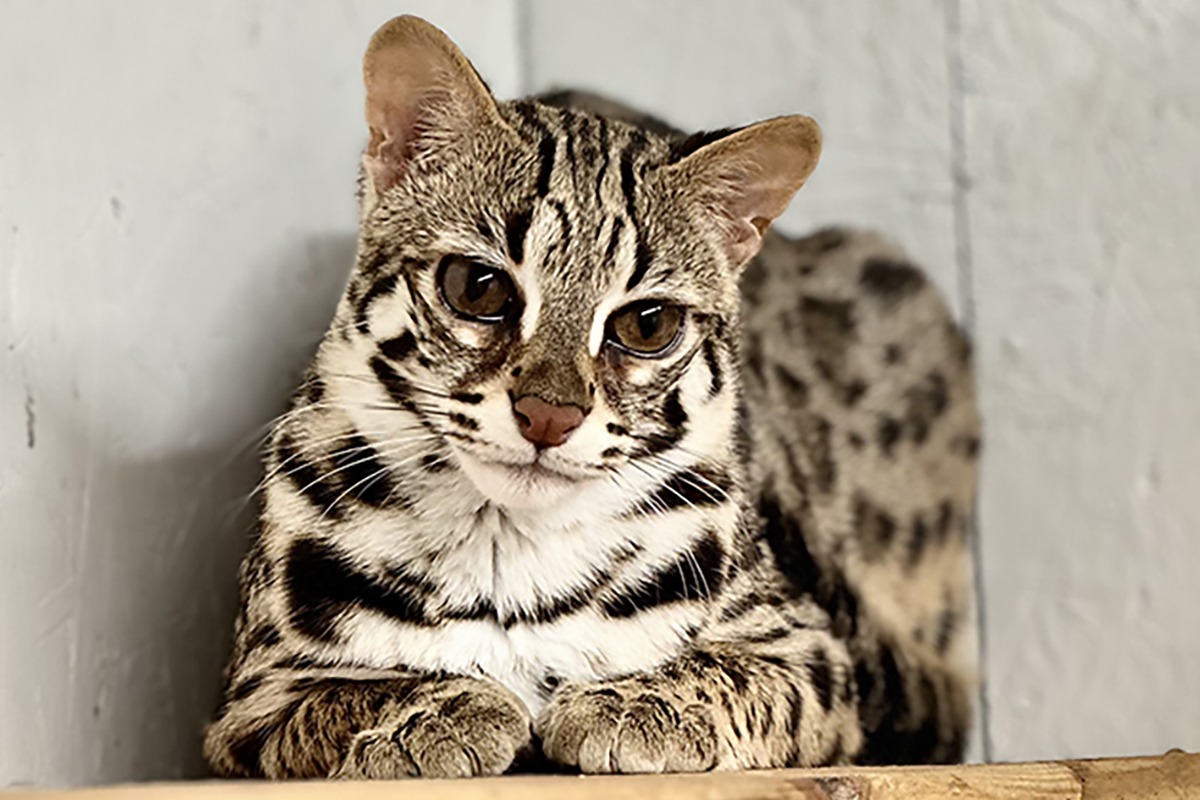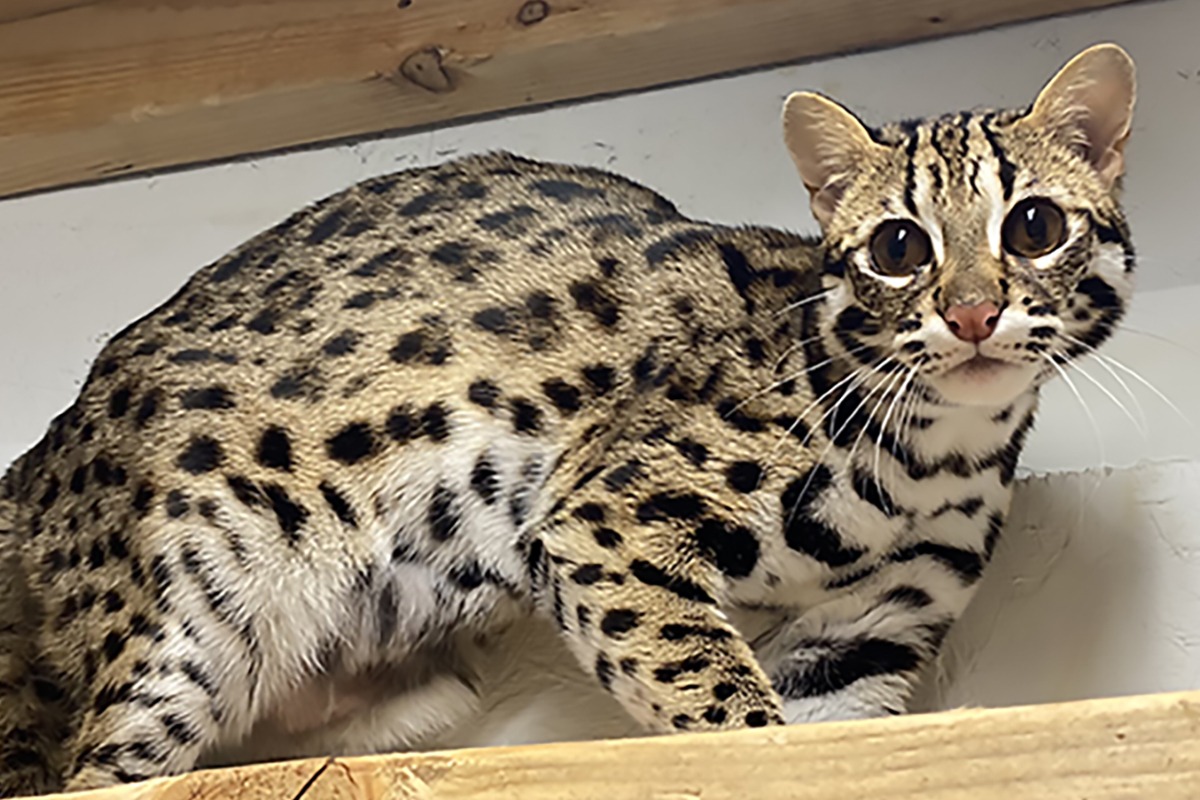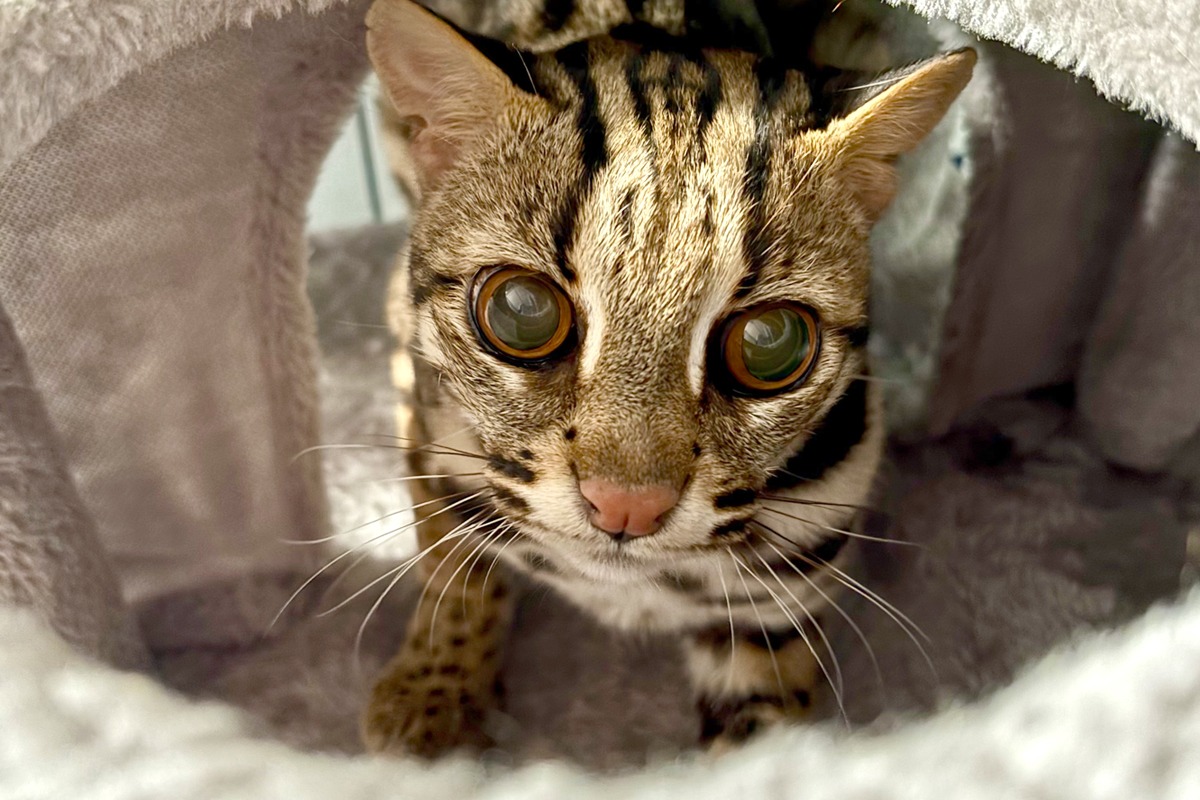Asian leopard cats (Prionailurus bengalensis)
Asian leopard cats are astonishingly adaptable predators the size of a house cat. They are the most widespread feline in Asia and can be found everywhere from lowland tropical evergreen forests to the frozen foothills of the Himalayas. Adaptable not only in their habitation, Asian leopard cats are also versatile hunters and have been found to consume over 95 different prey species including small mammals, birds, lizards, amphibians, and insects.
Due to their adaptability, Asian leopard cats are often found living in and around human settlements. Tragically, these lithe cats are heavily hunting across much of their range and their beautiful pelts feature significantly in the fur trade. Furthermore, they are increasingly threatened with habitat destruction and, even in areas where they are not hunted for their skin, young Asian leopard cats are still captured and sold into the pet trade.
While the Asian leopard cat may not be a widely recognized species in North America households, Bengal cats are. Bengal cats are a hybrid of an Asian leopard cat and a domestic cat. Just like their wild relatives, Bengal cats do not make good pets and often exhibit far more of their wild tendencies than domesticated ones which leads to behavioral issues that can prove dangerous to the cat and incompatible with human co-habitation.
Did you know?
Closely related to fishing cats and Pallas’s cats, Asian leopard cats are excellent swimmers, completely at ease in the water, and accomplished climbers, often found snoozing in leafy branches. Researchers have reported seeing Asian leopard cats playing joyously in ponds and crossing fast-moving rivers with relative ease. Asian leopard cats have even colonized islands throughout their range.
In areas of habitat overlap, the main predators of Asian leopard cats are reticulated pythons, large raptors, owls, clouded leopards, and other larger cats.
The IUCN, lists the Asian leopard cat as a species of least concern, although they are listed as vulnerable in China and Philippines. In China they are still legally hunted outside of protected areas and their skins are often found in Chinese fur warehouses. Hunting Asian leopard cats is illegal in tropical and subtropical Asia, nonetheless, they are ubiquitously killed for fur and meat and in retaliation for poultry predation. Despite being protected in Indonesia, they are still targeted for the pet trade and are commonly found in wildlife markets in Java.
Like many other small cats, Asian leopard cats hunt and capture prey using a perfect combination of vision and vibrissae (whiskers).
It takes the skins of thirty six Asian leopard cats to make one full length coat, an item commonly found in tourist shops in Kathmandu, Nepal, and Kashmir.
In captivity they have proven to be fierce and untamable.




